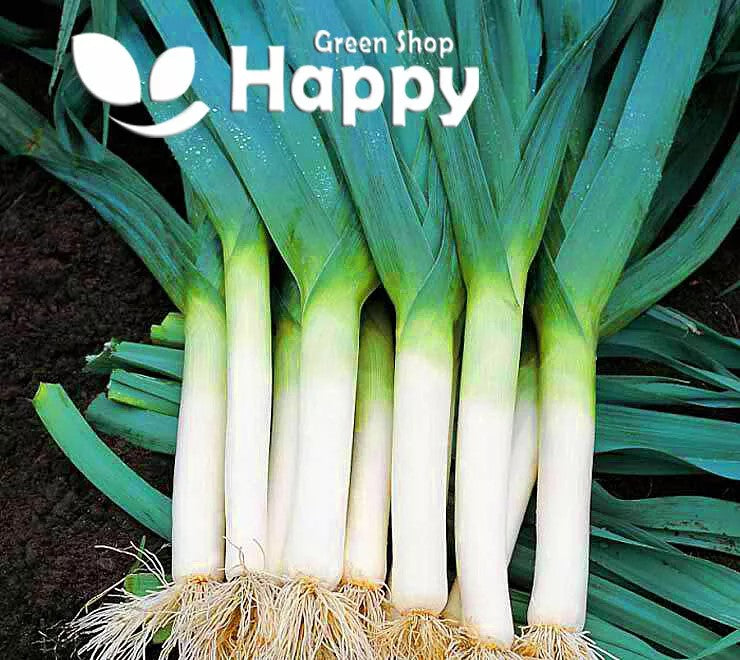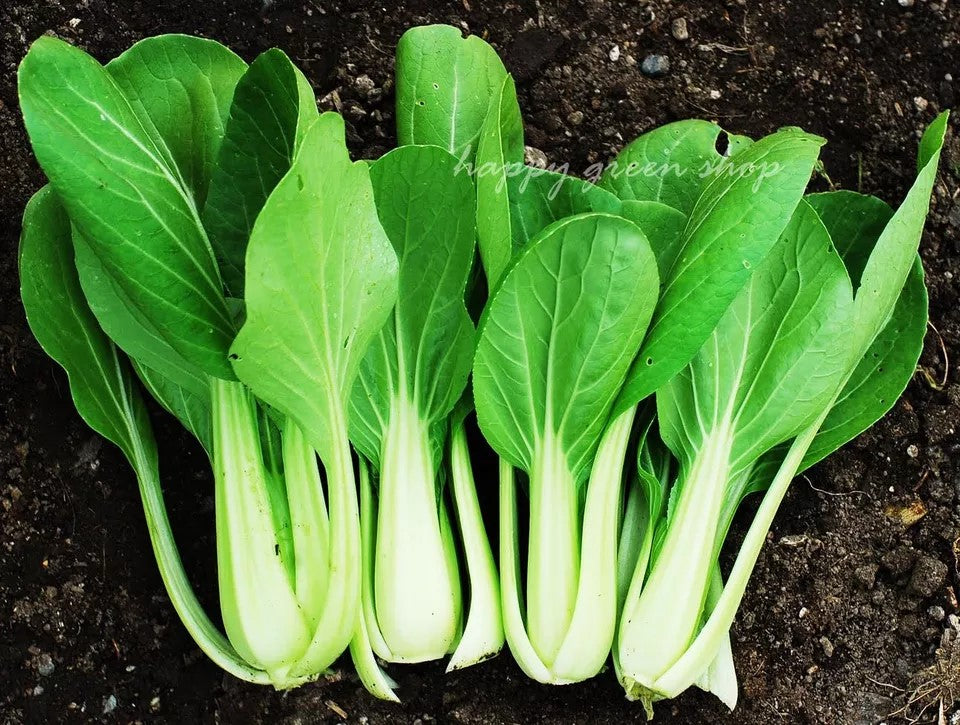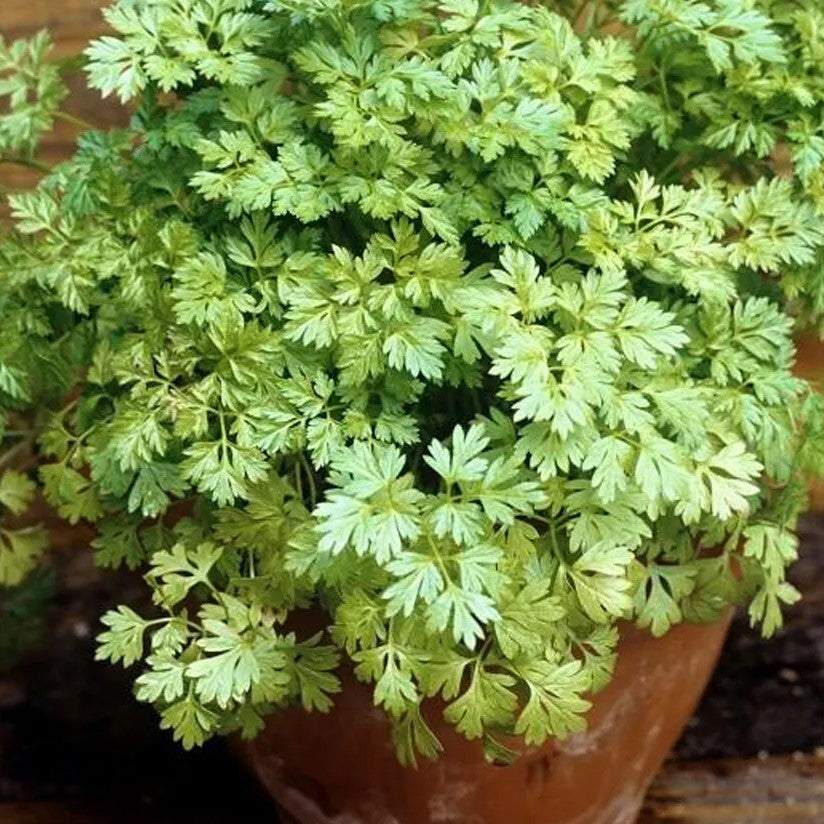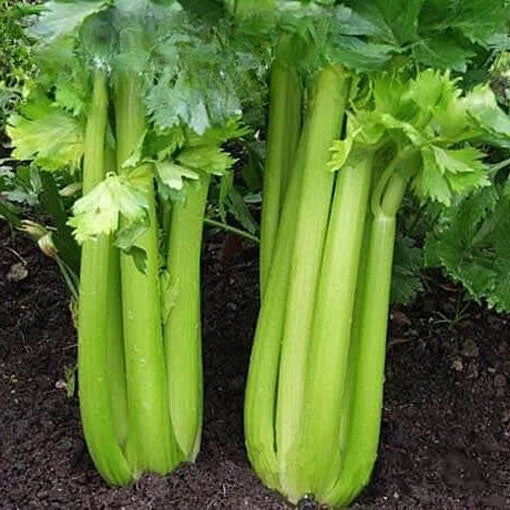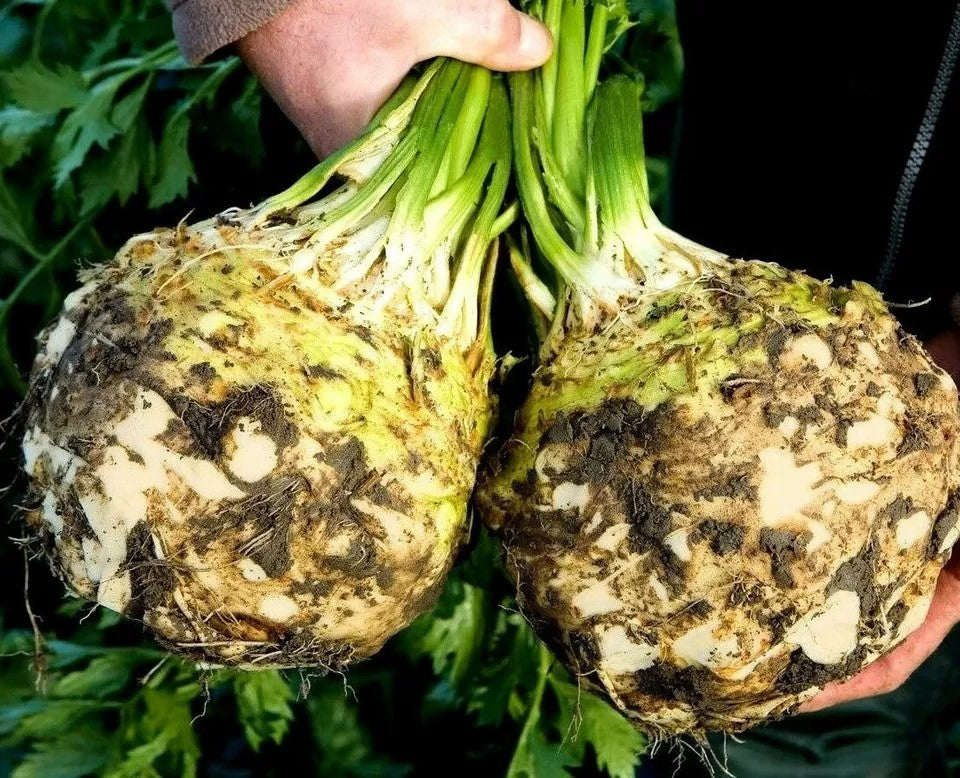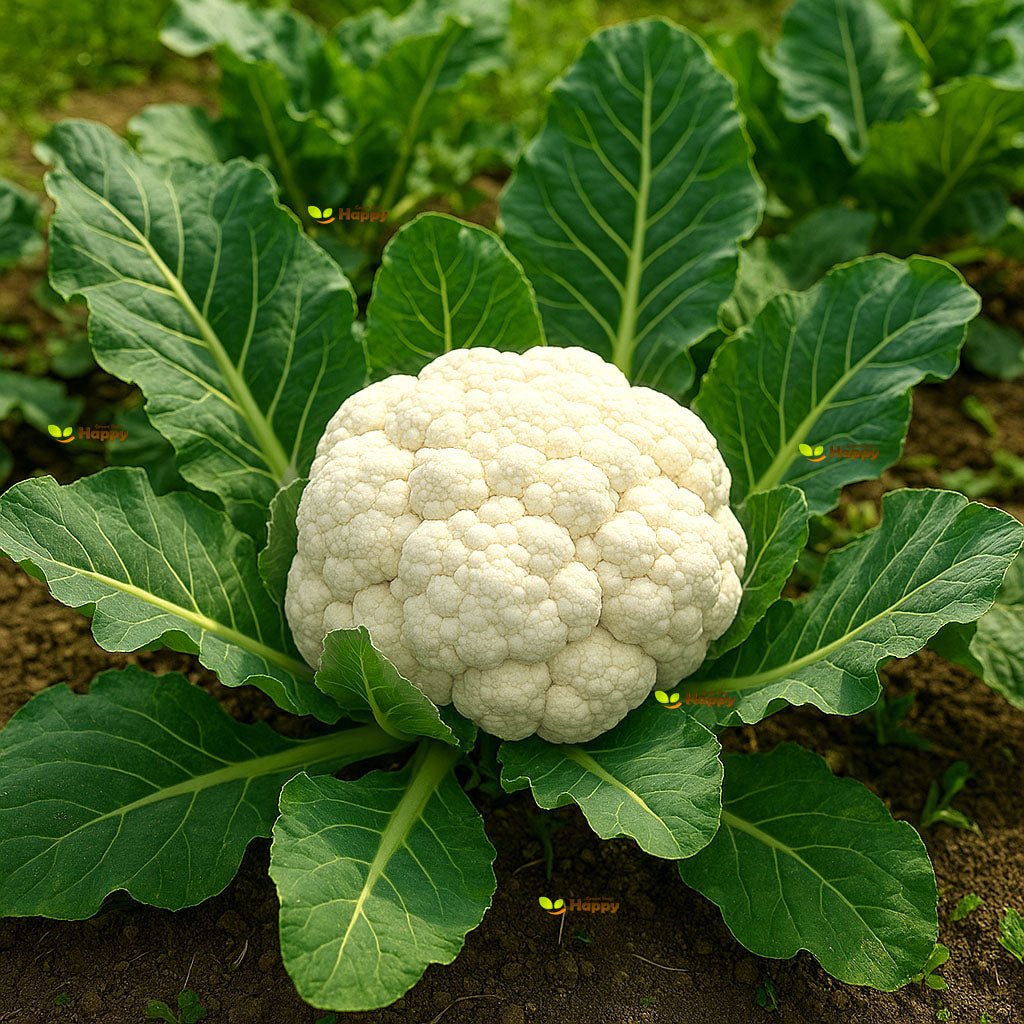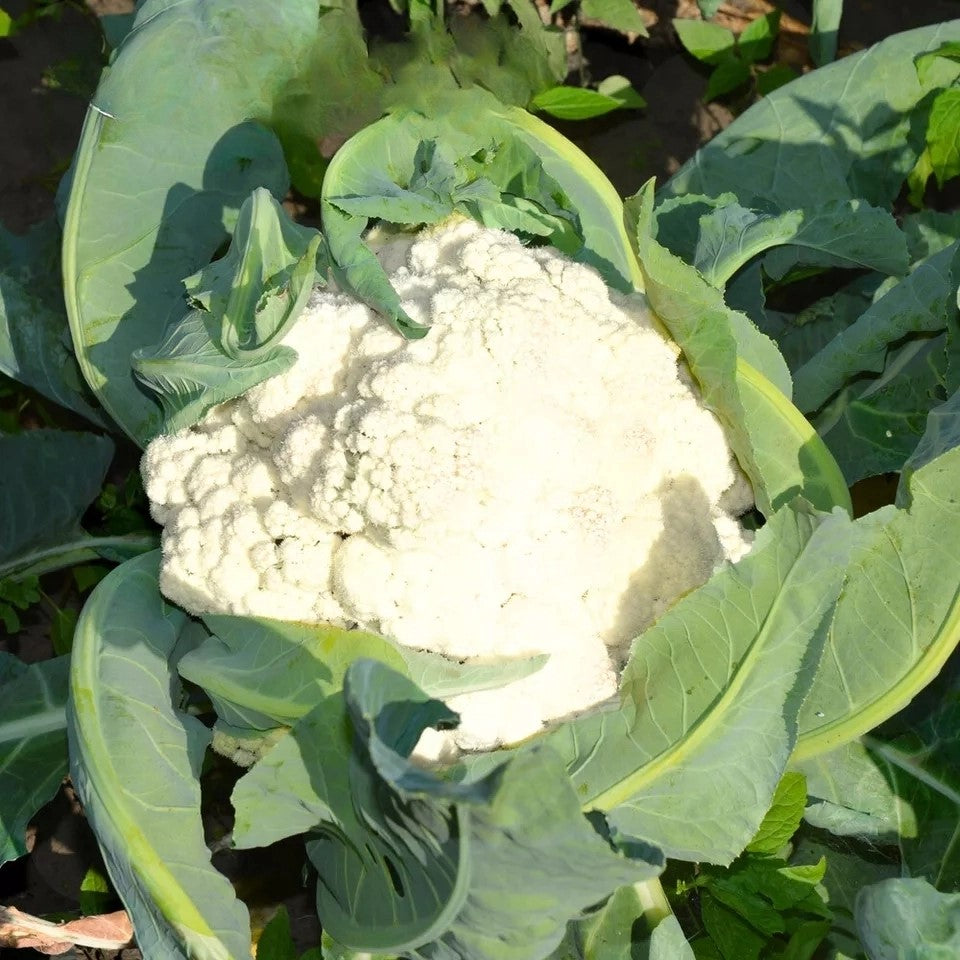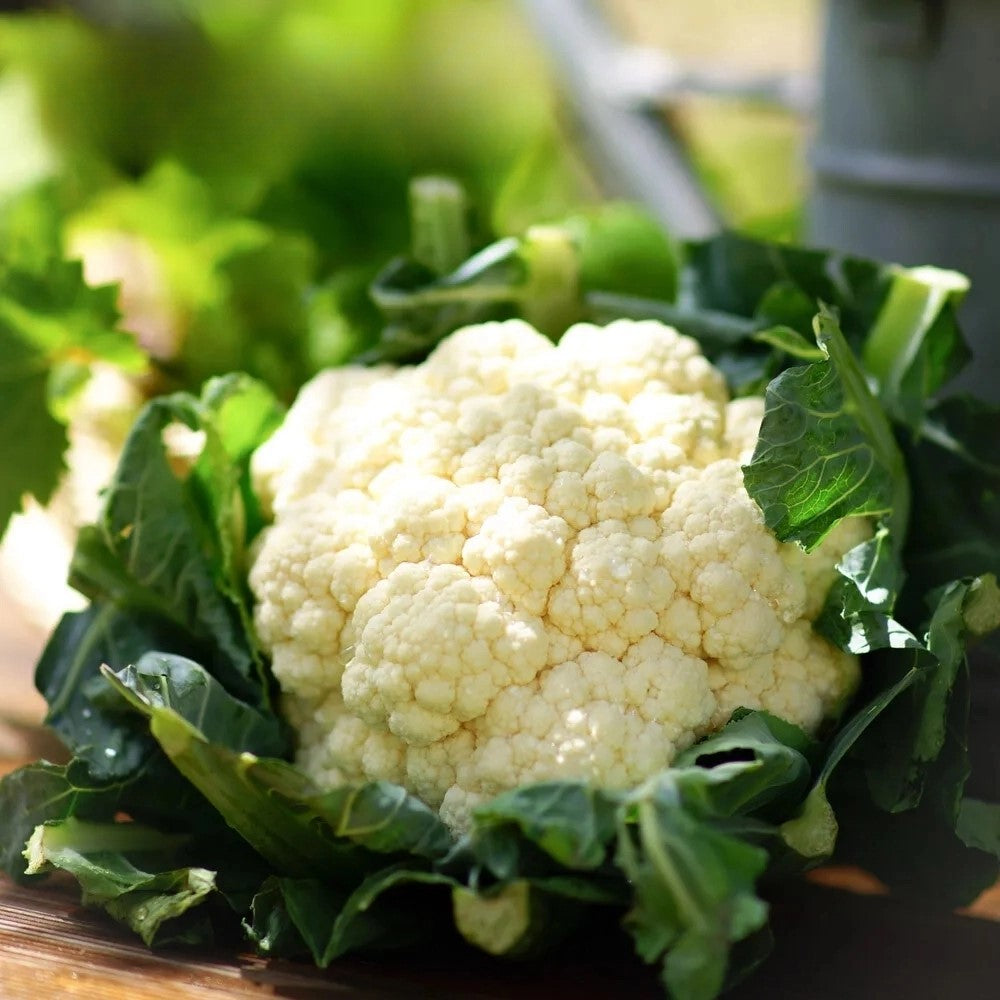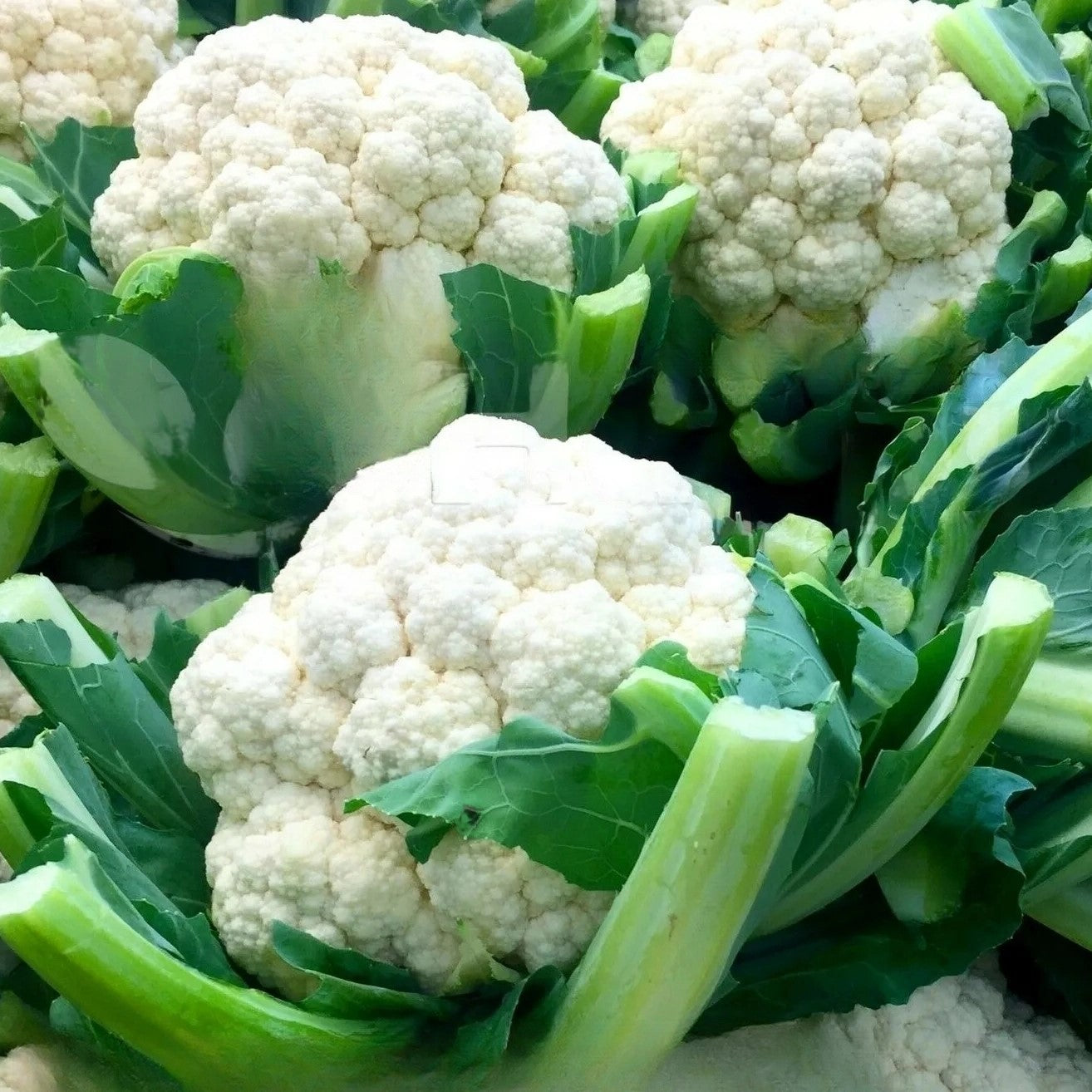Sort by:
97 products
97 products
Chinese Cabbage ‘Pak Choi’ Seeds (Brassica oleracea)
Add fresh crunch to your kitchen garden with Chinese Cabbage ‘Pak Choi’ (Brassica oleracea). This fast-growing Asian green produces crisp white stems and tender, glossy green leaves with a mild, sweet flavor. Delicious in stir-fries, soups, and salads, Pak Choi is versatile, nutritious, and easy to grow in beds, borders, or containers.
How to Grow
-
Sow seeds indoors from early spring or directly outdoors from spring to late summer.
-
Use fertile, moist, well-drained soil in full sun or partial shade.
-
Sow seeds 1 cm deep and thin seedlings to 20–25 cm apart.
-
Keep soil consistently moist to prevent bolting.
-
Harvest young leaves as cut-and-come-again or allow plants to mature for full heads.
Key Features
-
Crisp white stems with tender, green leaves
-
Mild, sweet flavor with high nutritional value
-
Fast-growing and productive crop
-
Excellent for stir-fries, soups, and fresh salads
-
Thrives in gardens, raised beds, and containers
Ideal For
-
Stir-fries, soups, and salads
-
Cut-and-come-again harvesting or full heads
-
Home gardens, allotments, and container growing
-
Quick, healthy crops for continuous harvest
Sowing
-
Best time: Spring to late summer
-
Depth: 1 cm
-
Spacing: 20–25 cm apart
-
Prefers full sun or partial shade, fertile and moist soil
Quick Tip
-
Sow in succession every few weeks for a steady supply of fresh, crunchy Pak Choi.
Chinese Cabbage 'Hilton' – Seeds (Brassica oleracea)
Chinese Cabbage 'Hilton' is a highly productive, reliable variety that produces large, barrel-shaped heads with crisp, pale green leaves and a sweet, mild flavor. Popular in Asian cuisine, it’s perfect for stir-fries, soups, salads, and traditional dishes like kimchi.
Fast-growing and versatile, 'Hilton' is ideal for both spring and late-summer sowings, offering gardeners a quick and rewarding crop.
How to Grow
. Sow indoors from March to May or directly outdoors from April
. For autumn crops, sow again from July to August
. Space plants 30–40 cm apart in fertile, moist soil
. Prefers cooler growing conditions for best results
. Protect young plants from pests such as flea beetles
Key Features
. Large, dense heads of sweet, tender leaves
. Quick-growing variety, ready in 60–75 days
. Excellent for stir-fries, salads, soups, and kimchi
. Can be grown in spring or late summer for staggered harvests
. High yields and reliable performance
Sowing & Harvest
. Sow from March to May or July to August
. Harvest from June to October
Short Tip
For the best flavor, harvest before heads become too mature, as older leaves can turn bitter.
Chervil – Seeds
(Anthriscus cerefolium) – Classic Culinary Herb
Chervil is a delicate, aromatic herb with finely cut, fern-like leaves and a subtle aniseed flavor. Often called the “gourmet’s parsley”, it is an essential ingredient in French cuisine and one of the traditional fines herbes (with parsley, tarragon, and chives). Best used fresh, chervil enhances soups, salads, omelets, fish, and sauces, adding a refined, mild flavor.
Key Features
-
Type: Annual culinary herb
-
Height: 30–50 cm
-
Leaves: Finely cut, light green, fern-like
-
Flavor: Mild anise, delicate and fresh
-
Harvest: 6–8 weeks after sowing
-
Use: Fresh leaves for seasoning
Ideal For
-
Culinary herb gardens & kitchen windowsills
-
French and Mediterranean dishes
-
Continuous harvest in small spaces
-
Pairing with parsley, tarragon & chives
Sowing & Growing
-
Sow outdoors: March–August, directly into the soil.
-
Depth: 0.5 cm, thinly in rows 20 cm apart.
-
Germination: 14–21 days at 12–18°C.
-
Position: Partial shade, moist, humus-rich soil.
-
Harvest: Young leaves as needed.
Care Tips
-
Regular sowings every 3–4 weeks ensure a constant supply.
-
Avoid hot, sunny locations (prefers cool shade).
-
Use leaves fresh – drying reduces flavor.
Celery 'Westland' – Seeds (Apium graveolens)
Celery 'Westland' is a vigorous, reliable variety that produces tall, crisp, and succulent stalks with a mild, aromatic flavor. It is well-suited for both home gardens and market growing, offering consistent yields of high-quality stems. Perfect for use in salads, soups, stews, or as a fresh crunchy snack.
This variety has excellent disease resistance and strong growth, making it one of the most dependable choices for gardeners looking to grow celery successfully.
How to Grow
-
Sow indoors: February – April
-
Transplant outdoors: May – June after hardening off
-
Depth: Surface sow and cover very lightly
-
Spacing: 25–30 cm apart in rows 30–40 cm apart
-
Position: Full sun, sheltered site
-
Soil: Moist, fertile, well-drained with plenty of organic matter
-
Watering: Keep soil consistently moist
Key Features
-
Produces tall, crisp, and aromatic stalks
-
Excellent for fresh eating, cooking, and juicing
-
Strong disease resistance and reliable yields
-
Ideal for home gardeners and allotments
-
Suitable for summer and autumn harvests
Harvest
-
Harvesting period: August – October
-
Cut stems as required for fresh use.
Short Tip
Keep soil consistently moist to prevent celery from becoming tough or stringy.
Celery ‘Utah’ Seeds (Apium graveolens var. secalinum)
Grow crisp, tender stalks with Celery ‘Utah’ (Apium graveolens var. secalinum). This reliable variety produces tall, smooth, green stems with a fresh, mild flavor, perfect for salads, soups, and stews. Known for its disease resistance and consistent quality, it’s a favorite for home gardeners and a must-have in the kitchen garden.
How to Grow
-
Sow seeds indoors 8–10 weeks before the last frost.
-
Use moist, fertile, well-drained soil in full sun.
-
Sow seeds thinly on the surface, pressing gently without covering deeply.
-
Keep soil consistently moist; germination may take 14–21 days.
-
Transplant seedlings outdoors after frost, spacing 25–30 cm apart.
-
Harvest stems when they reach full size but remain crisp.
Key Features
-
Produces tall, smooth, green stalks
-
Crisp texture with a mild, refreshing flavor
-
Excellent for soups, stews, and salads
-
Strong, reliable, and disease-resistant variety
-
Perfect for home gardens and allotments
Ideal For
-
Fresh salads, cooking, and soups
-
Vegetable gardens, allotments, and raised beds
-
Gardeners who want a reliable, easy celery variety
-
Continuous harvesting through the season
Sowing
-
Best time: Indoors 8–10 weeks before last frost
-
Depth: Surface sow, cover lightly
-
Spacing: 25–30 cm apart
-
Prefers full sun and fertile, moist soil
Quick Tip
-
Water regularly and mulch around plants to keep soil cool and prevent stems from becoming tough or stringy.
Celeriac ‘Albin’ – Seeds (Apium graveolens)
Celeriac ‘Albin’ is a dependable variety producing smooth, round roots with creamy white flesh and excellent flavor. Known for its tender texture and mild, nutty taste, this versatile root vegetable is perfect for mashing, roasting, soups, and salads. A slow-growing but hardy crop, it thrives in cooler climates and stores well through winter.
How to Grow
-
Sow indoors: February – April in trays or modules at 18–20°C.
-
Transplant outdoors: May, spacing 30 cm apart in rows 40 cm apart.
-
Prefers fertile, moisture-retentive soil in full sun.
-
Keep well-watered during dry spells to encourage large, smooth roots.
Key Features
-
Smooth, round roots with white flesh
-
Nutty, mild flavor for versatile cooking
-
Good storage qualities for winter use
-
Reliable variety for cool climates
Ideal For
-
Mashing, roasting, and soups
-
Winter storage and seasonal dishes
-
Home gardens and allotments
Sowing & Harvest
-
Sow: February – April
-
Harvest: October – December
Quick Tip
Remove side shoots during the season to focus the plant’s energy on swelling the root.
Cauliflower ‘All The Year Round’ – Seeds (Brassica oleracea)
Description:
Enjoy reliable harvests with Cauliflower ‘All The Year Round’ (Brassica oleracea), a versatile and hardy variety suitable for spring, summer, and autumn cropping. It produces compact, white heads with excellent flavor and texture, ideal for steaming, roasting, or use in soups and casseroles. Easy to grow from seed, this dependable cauliflower performs well in most soils and weather conditions, making it perfect for home gardens and allotments.
Key Features
-
Reliable, hardy variety for multiple seasons
-
Compact, firm white curds with great flavor
-
Suitable for spring, summer, and autumn harvests
-
Tolerant of varying weather conditions
-
Easy to grow from seed
Ideal For
-
Home and kitchen gardens
-
Allotments and vegetable plots
-
Fresh cooking, freezing, and preserving
-
Year-round vegetable production
Sowing & Growing
-
Sow Indoors: January–April
-
Sow Outdoors: March–June
-
Transplant Outdoors: April–July
-
Germination: 7–14 days at 15–20°C
-
Spacing: 45–60 cm apart
-
Light: Full sun
-
Soil: Fertile, firm, well-drained
Care Tips
-
Water regularly, especially during dry periods
-
Protect young plants from pests and frost
-
Add compost or organic matter before planting
-
Harvest when heads are firm and white
Cauliflower 'Snowball X' – Seeds
(Brassica oleracea) – Classic White Curds, Reliable & Early
Cauliflower 'Snowball X' is a high-yielding, early-maturing variety known for its compact, snow-white curds and uniform growth. Its tender, mild-flavored heads make it perfect for fresh eating, steaming, roasting, and soups. A reliable choice for home gardens and small-scale growers.
Key Features
-
Type: Biennial, grown as annual
-
Heads: Compact, dense, snow-white
-
Flavor: Mild, tender, sweet
-
Harvest: Early to mid-season
-
Use: Fresh cooking, steaming, roasting, soups, freezing
Ideal For
-
Home gardens & allotments
-
Early harvesting for fresh consumption
-
Succession planting for continuous supply
-
Culinary use and freezing
Sowing & Growing
-
Sow indoors: February–April, transplant seedlings after 4–6 weeks.
-
Sow outdoors: March–May for late summer harvest.
-
Spacing: 45–60 cm between plants, 60–70 cm between rows.
-
Soil: Fertile, well-drained soil enriched with compost.
-
Harvest: When heads are compact and fully formed, before they start to separate.
Care Tips
-
Keep soil evenly moist to prevent splitting.
-
Protect young plants from pests with netting if necessa
Cauliflower 'Octavian' – Seeds (Brassica oleracea)
Cauliflower 'Octavian' is a reliable mid-season variety producing large, firm, creamy-white heads with a mild, delicate flavor. Ideal for steaming, roasting, soups, and gratins, it is a versatile addition to any vegetable garden.
This hardy variety performs well in a range of soils, offers excellent disease resistance, and is suitable for home gardens, allotments, and small-scale cultivation.
How to Grow
-
Sow indoors: February – April
-
Transplant outdoors: April – June
-
Depth: 0.5–1 cm
-
Spacing: 40–50 cm between plants, rows 60–70 cm apart
-
Position: Full sun, sheltered from strong winds
-
Soil: Fertile, well-drained, rich in organic matter
-
Watering: Keep soil consistently moist for optimal head development
Key Features
-
Mid-season cauliflower with large, firm, creamy-white heads
-
Mild, tender flavor suitable for steaming, roasting, soups, and gratins
-
High-yielding and reliable growth
-
Excellent disease resistance
-
Ideal for home gardens, allotments, and small-scale cultivation
Harvest
-
Harvesting period: July – September
-
Harvest heads when compact and firm to ensure the best flavor and texture.
Short Tip
Blanch the heads by folding outer leaves over them to maintain whiteness and protect from sunburn.
Showing 90/97

